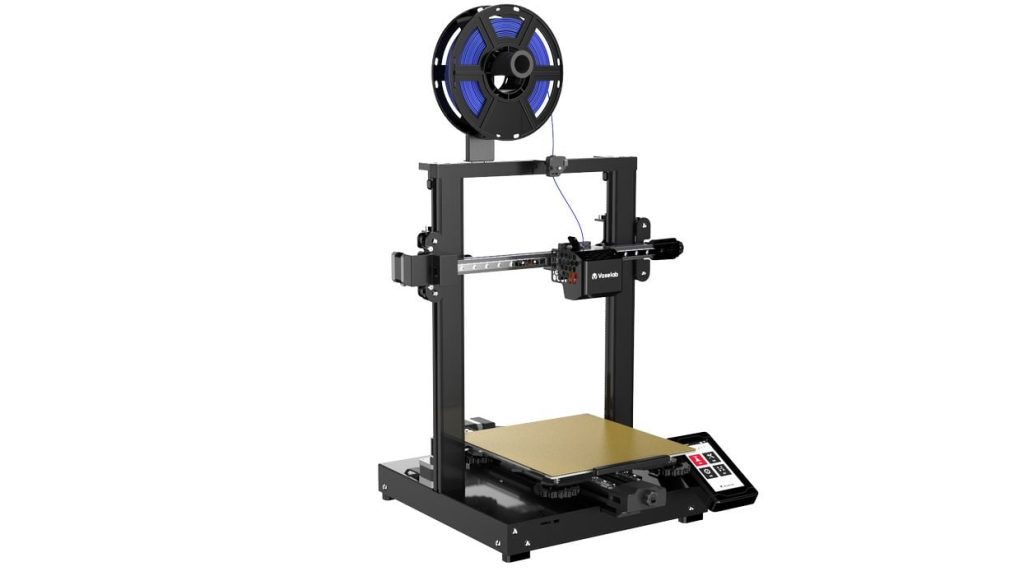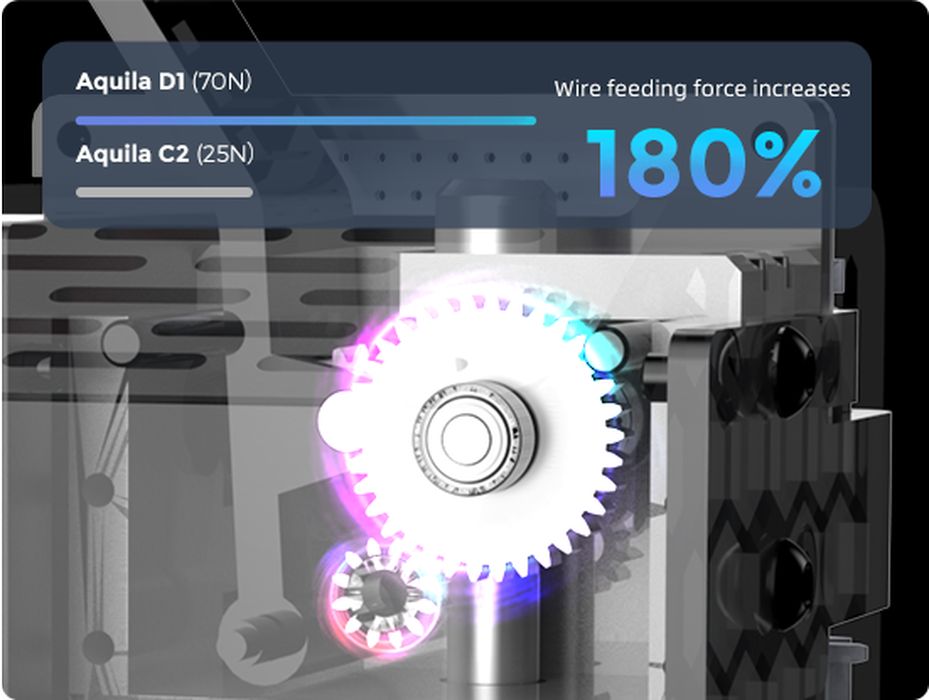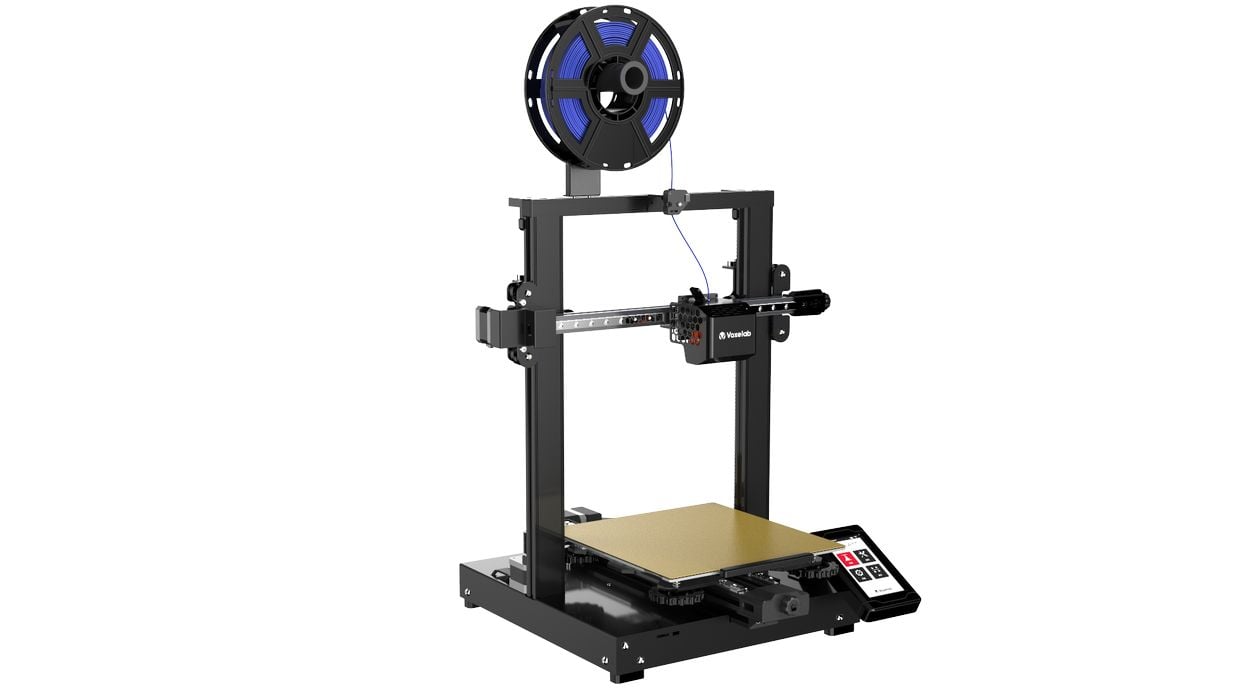
Voxelab announced the Aquila D1, a much more powerful FFF desktop 3D printer.
Voxelab is known for producing inexpensive desktop 3D printing equipment using the FFF and MSLA processes. Over the past while we have reviewed several of their machines, including the Aquila X2, Aries and Aquila S2 models.
While we haven’t got our hands on the new Aquila D1 yet, we do know quite a bit about this brand new machine.
Like its siblings, the Aquila D1 uses the FFF process, and operates with 1.75mm filament on a single nozzle toolhead.
The build volume is a generous 235 x 235 x 250 mm, which should be sufficient to build most hobby models. The motion system uses silent stepper motor drivers, leaving the system with only 50dB of noise, which is pretty quiet.
The print surface is a magnetically-attached, PEI-coated, flexible sheet as is now standard among FFF desktop devices. There’s a 25-point (5×5) automated bed leveling procedure.
The machine includes a filament-out sensor that automatically pauses printing if triggered, as well as a power-out sensor. That sensor will gracefully shut the print job down and allow for a resumption of the print job when power is restored.
The system overall seems quite robust, as it now includes linear rails for rapid motion, as well as dual Z-axis screws for vertical accuracy. There’s also dual gears in the extruder that apparently provide up to 70n of force, said to be a 150% improvement over their prior extruders.
Inside the Aquila D1 is a 32-bit processor that should handle the higher print speeds. Control of the device is via a 4.3” color touchscreen.

Voxelab has also increased the nozzle temperature of the Aquila D1 to 300C, which is significant. This means that the device is more able to handle materials requiring higher temperatures, such as ASA, ABS and nylons. But a higher-performance hot end also can more rapidly heat filament as it passes through during printing. There’s also a high performance cooling system to more rapidly free freshly extruded polymers.
All of these features add up to one key feature on the Aquila D1: very fast 3D printing. Think about it: faster CPU, smoother motion system, higher fan speeds, higher temperatures all add up to an environment where the speed of printing should increase.
That is indeed the case, as Voxelab suggests the Aquila D1 is able to print at speeds up to 180mm/s, which is extremely fast compared to the more typical 40-60mm on most of today’s desktop FFF 3D printers. Typically, however, they say the average print speed is about 100mm/s. This is because you would hit the maximum speed only on long, straight extrusions; the toolhead must slow down to go around corners, etc.
Nevertheless, that’s an incredibly fast print speed, especially for one that costs only US$399 in their pre-sale, which opened this week.
The Aquila D1 looks to be a very intriguing machine, and I’m hoping we get a chance to give it a test in our lab.
Via Voxelab

